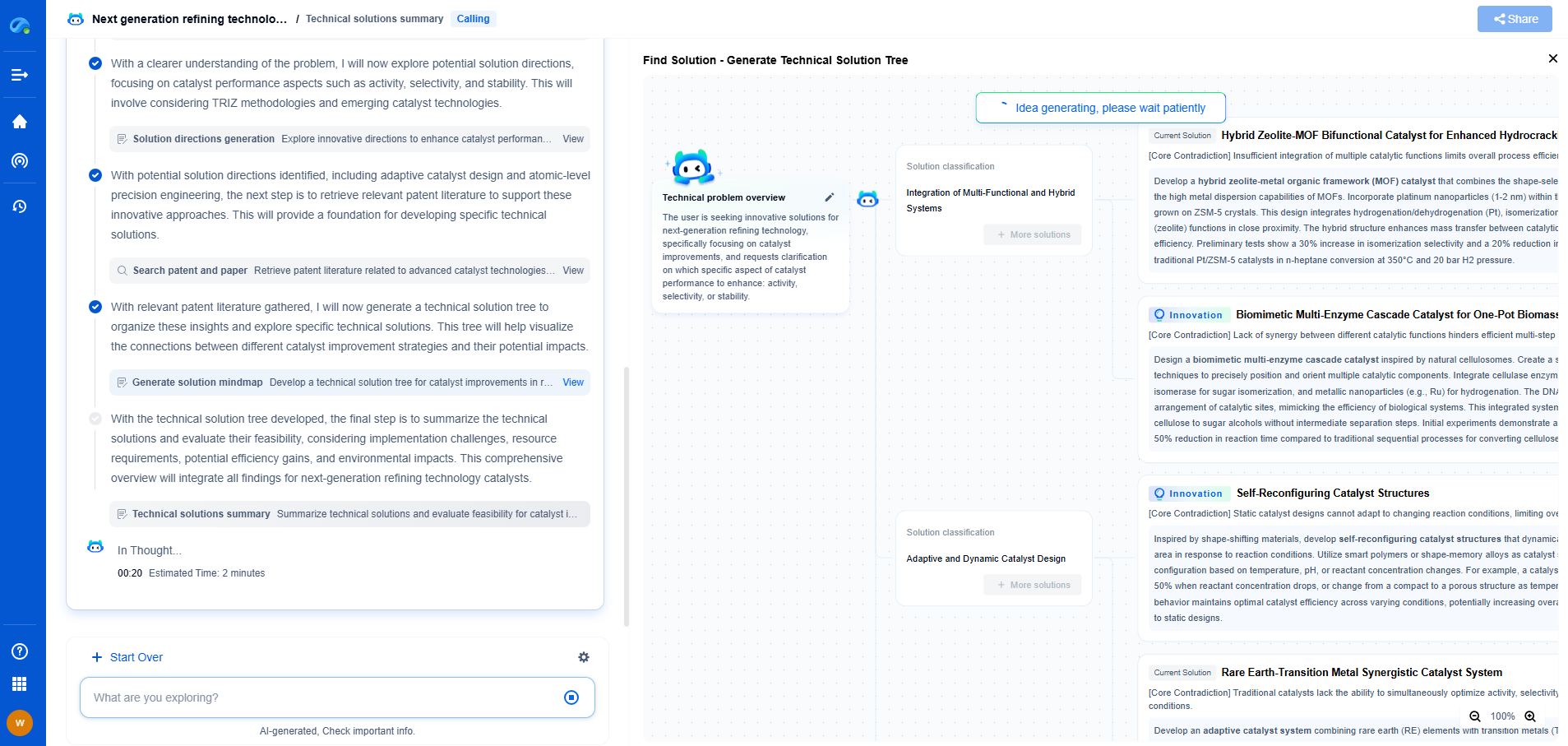How Fiber and Wireless Backhaul Options Compare in 5G Rollout
JUN 27, 2025 |
The rollout of 5G networks marks a significant milestone in telecommunications, promising ultra-high speeds, low latency, and massive connectivity. A critical component of this rollout is the backhaul network, which connects the wireless network to the core network. As 5G installations expand, choosing the right backhaul solution becomes essential for operators. Two primary options for backhaul are fiber and wireless. Understanding their strengths, weaknesses, and applications is crucial for determining the best strategy to support 5G's burgeoning demands.
Fiber Optic Backhaul: The Gold Standard
Fiber optics has long been revered as the gold standard in backhaul solutions. Its ability to offer virtually unlimited bandwidth with minimal latency makes it exceptionally suited for handling the increased data loads of 5G. Fiber networks are inherently reliable, immune to electromagnetic interference, and capable of transmitting data over long distances without significant loss.
Advantages of Fiber Backhaul
- **High Capacity**: Fiber networks can provide high-speed data transmission, making them ideal for urban areas with dense data requirements.
- **Reliability**: Fiber is less susceptible to environmental factors that can disrupt service, such as weather conditions.
- **Future-proofing**: As data demands continue to grow, fiber's scalability ensures it can meet future needs without substantial infrastructure upgrades.
Challenges with Fiber Backhaul
Despite its advantages, fiber installation can be prohibitively expensive. The logistics associated with laying fiber cables, especially in urban environments, can involve significant disruption and cost. Additionally, in rural or remote areas, the installation of fiber backhaul may not be economically viable due to the vast distances involved and lower population density.
Wireless Backhaul: Flexibility and Cost-effectiveness
Wireless backhaul solutions provide an alternative that can be more flexible and cost-effective than fiber, particularly in certain scenarios. Technologies such as microwave and millimeter-wave links have improved significantly, offering viable options for connecting 5G networks to the core.
Advantages of Wireless Backhaul
- **Deployment Speed**: Wireless solutions can often be deployed more quickly than fiber, avoiding the logistical challenges of cable laying.
- **Cost-effective**: In areas where laying fiber is cost prohibitive, wireless backhaul serves as a more budget-friendly option.
- **Accessibility**: Wireless can bridge gaps in coverage where fiber installation is impractical, such as remote or difficult-to-access areas.
Challenges with Wireless Backhaul
Wireless solutions can be susceptible to environmental factors, such as weather conditions, which can affect reliability and performance. Additionally, they may offer lower bandwidth compared to fiber, which can limit capacity in high-demand areas. Regulatory issues regarding spectrum availability can also pose challenges.
Comparative Analysis: Fiber vs. Wireless
When deciding between fiber and wireless backhaul for 5G rollout, operators must weigh several factors, including cost, speed of deployment, and long-term capacity needs. In urban areas with high data demand, fiber is often the better choice due to its superior capacity and reliability. Conversely, wireless may be more suitable in rural areas or regions where quick deployment is necessary.
Hybrid Solutions: Leveraging Both Technologies
Many operators are adopting hybrid solutions, utilizing both fiber and wireless backhaul to optimize their 5G networks. By leveraging the strengths of both technologies, operators can enhance network resilience and coverage. For instance, fiber can be used in dense urban centers, while wireless links cover perimeter areas and less densely populated regions.
Conclusion: Choosing the Right Backhaul Strategy
The decision between fiber and wireless backhaul is not one-size-fits-all. It requires careful consideration of the unique geographical, economic, and logistical challenges of each deployment area. As 5G continues to evolve, operators must remain agile, adapting their backhaul strategies to meet the dynamic demands of end-users and technological advancements. By understanding and strategically applying the benefits of both fiber and wireless solutions, providers can ensure a robust and efficient 5G network rollout.
Unlock Next-Gen Innovation in Communication Technology with Patsnap Eureka
The field of communication technology is evolving at breakneck speed—from 5G and satellite systems to next-gen wireless protocols and quantum communications. Staying ahead demands more than just information—it requires strategic insights, real-time patent intelligence, and a deep understanding of technological trajectories.
Patsnap Eureka, our intelligent AI assistant built for R&D professionals in high-tech sectors, empowers you with real-time expert-level analysis, technology roadmap exploration, and strategic mapping of core patents—all within a seamless, user-friendly interface. Whether you're optimizing signal processing designs, navigating 3GPP standards, or exploring IP strategies for IoT and 6G networks, Eureka helps you move faster, think deeper, and innovate smarter.
Try Patsnap Eureka today—and see how it can transform the way you work across the entire communication technology innovation lifecycle.
- R&D
- Intellectual Property
- Life Sciences
- Materials
- Tech Scout
- Unparalleled Data Quality
- Higher Quality Content
- 60% Fewer Hallucinations
Browse by: Latest US Patents, China's latest patents, Technical Efficacy Thesaurus, Application Domain, Technology Topic, Popular Technical Reports.
© 2025 PatSnap. All rights reserved.Legal|Privacy policy|Modern Slavery Act Transparency Statement|Sitemap|About US| Contact US: help@patsnap.com

